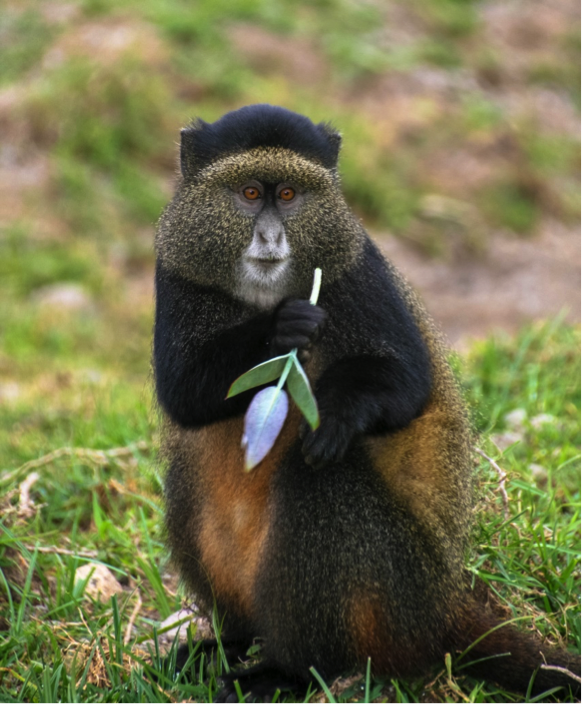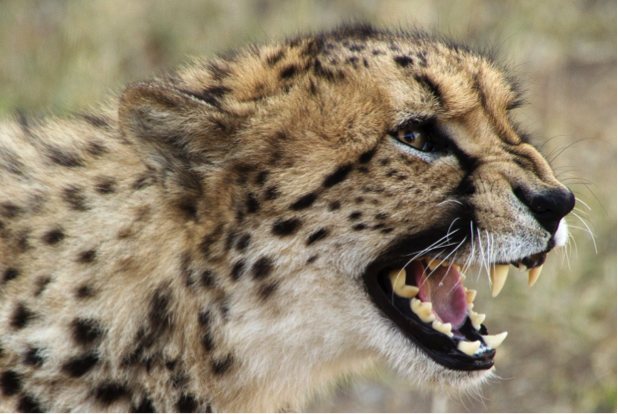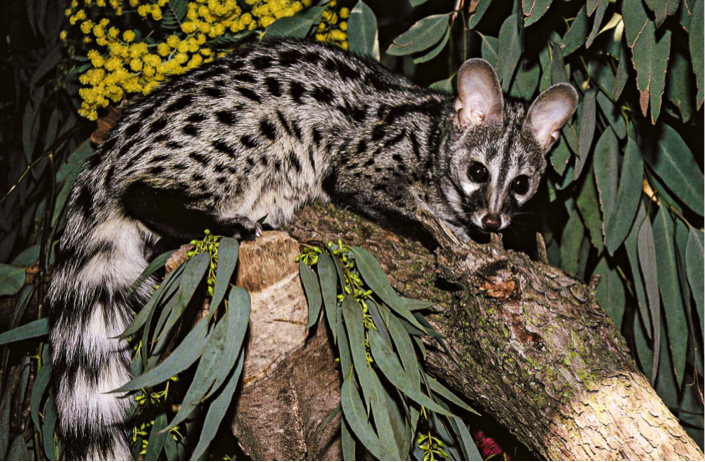Adventure Consults Cute Five
January 25, 2022 - 15 minutes readA lot has been preached and published about the Big-Five, but there hasn’t been much mention about the Cute-Five!
Cute creatures are adorable; lambs gambolling in a field, fluffy ducklings in a nest or kittens playing with a ball of wool can make even the hardest soul melt. But what makes the ‘oohs’ and ‘aahs’ escape us?
All animals are cute in their own unique way, but there are some with very special features that make us gooey on the inside. The big eyes, fuzzy bodies, rare coloration and coat designs all combine to make our hearts melt.
The Adventure Consults team would like to have your thoughts and votes on the 5 cutest animals. We will be sharing a list of 5 candidates every week for a period of 3 weeks. We’ll cast the final vote in the 4th week. Sounds fun, yeah?
The ‘candidates’ to be shared will be randomly nominated by our team, but we request that you to share your favorites by email (sales@adventureconsults.com), or you can share images for the rest of the world to see via social media platforms below;
The rules are simple!
- The well-known Big five don’t qualify for nomination.
- We love domestic animals, but they don’t qualify for this contest.
- Nominees must be animals that can be or have been sighted in either Uganda, Rwanda or both.
Here are the first Adventure Consults cute-five nominees!
-
The Oribi

Did you expect this cute antelope to be among the first nominees? The oribi is a small antelope found in Eastern, Southern and Western Africa.
Body looks; Generally slender and small. Males have distinctively large glands beneath the eyes. Length 37–44 in (93–111 cm); height 24–27 in (60–69 cm); weight 33–46 lb (15–21 kg).
What makes the oribi distinctively cute are the large black eyes, body coloration with a tail often darker than the rest of the body and has got a white underside.
Males have straight horns, sharp, and annulated, and can grow up to 7.5 inches (19 cm) and angle slightly to the anterior.
The Oribi is adapted to a range of environmental conditions and behavior is linked to local conditions. Males are good at defending females from trouble and cooperatively protect their territories. They mark territories with urine, feces, and glandular secretions.
How do oribis communicate? Primary vocalization is a shrill whistle used to alert group members to approaching danger. Other vocalizations include bleats, mews, and, upon capture, human-like screams.
Oribis are Polygamous. Group size is highly variable and ranges from solitary animals to groups of up to 12 adults. The gestation period of an oribi is 6.5–7 months. The young ones always hide in tall vegetation for up to three months before joining the rest of the group. Birth peaks coincide with the arrival of rainy seasons, so you might be lucky with a good sighting if you happen to travel to Uganda during the rainy season.
Oribis are selective grazers of fresh green grasses, forbs, legumes, and also eat tree foliage when fresh grass is unavailable. Fungi, flowers, and fruit are often eaten, as is soil, for their nutrient content. Feed actively at day and night, but generally avoid heat of midday and are most active during cool hours of early morning and late afternoon. Survive in some areas with little access to open water.
In Uganda, the oribi can be seen at Pian-Upe Wildlife reserve, Murchison falls National Park , Kidepo Valley National Park and Matheniko Wildlife Reserve.
Here are some Safari options that will give you an opportunity for oribi sightings in Uganda.
- The Pearl Of Africa – Uganda Highlights
- Safari to Kidepo – Uganda.
- Escape to Murchison Falls and KidepoValley National Park
2. The Golden Monkey
As the name suggests, Golden monkeys are called so because of the unique Golden coloring. The tails of the Golden monkey are bright, vibrant, golden orange, as are its cheeks, and patches of its back and torso. This poses a sharp contrast to its jet-black legs and head for a visually stunning effect. Female colors are more golden and deeper, males look duller and lighter. No doubt therefore the females are more attractive.
What else is needed to make the Golden Monkey one of the Cutest Five?
The elusive Golden monkeys have forward facing eyes that allow them to focus on a single object and judge depth and distance, a critical ability for life in the bush.
The colorful creatures are a subspecies of Blue Monkey and are endemic to the Virunga Volcanoes which partly covers Mgahinga Gorilla National Park and Volcanoes National park (Rwanda).
Golden Monkey’s lifespan is about 20 years and their population is estimated between 2,000 and 4,000.
Mating and births coincide with the rains and food availability, so might be the best time to plan for your trip to Uganda or that dream trip to Rwanda.
Golden monkeys’ predators are crowned eagles and golden cats but the biggest threat comes from humans who illegally cut bamboo. Habitat loss and killing of Golden Monkeys by humans for various reasons, has led to limited numbers and hence classified as endangered.
Golden monkey tracking is not as exhausting as gorilla tracking because the monkeys do not build new nests everyday so there is no need for pre-trackers to trace them every morning.
Adventure Consults tailor-makes special packages for experiential tourism (Golden Monkey habituation experience in Uganda). This gives visitors an opportunity to visit Golden Monkeys for an insight and a better understanding of conservation and protection of these endangered species. Note that prolonged viewing of the Golden Monkeys gives photographers the best opportunity for getting the best images of these chattering cute monkeys.
Here are guiding itineraries that will lead you to the Golden Monkey tracking experience and also get to see more than just Primates!
- Gorillas and Golden Monkeys-Rwanda.
- Primate Safari-Rwanda
- Golden Monkey Habituation Experience – Uganda
3. The Cheetah
Cheetahs are smallest in big cat family, yet the fastest land animal in the world and possibly one of the cutest mammals on earth!
What makes Cheetahs one of Adventure Consults’ cute-five nominees? The fast running cats are famous for their tawny coats covered in black spots, each arranged in a unique pattern to help the animals identify one another. Bold black stripes streak like tears from the inner corners of their eyes down to both sides of their mouths, and the ends of their bushy tails are encircled by black rings. As the only big cat with a semi-retractable claw, rather than the fully retractable claws that help lions tear flesh and climb trees
Cheetahs’ coats can vary depending on their habitat.
Cheetahs can purr though and usually purr most loudly when they are grooming or sitting near other cheetahs. While lions and leopards usually do their hunting at night, cheetahs hunt for food during the day. A cheetah has amazing eyesight during the day and can spot prey from 5 km away.
With their light body weight and blunt claws, cheetahs are not well designed to protect themselves or their prey. When a larger or more aggressive animal approaches a cheetah in the wild, it will give up its catch to avoid a fight.
Although they typically prefer open grasslands, cheetahs live in a range of habitats across Africa. In Uganda, cheetahs can be seen in Kidepo Valley National Park and Pian-Upe Wildlife reserve. Get in touch for more – sales@adventureconsults.com
4. The Genet
These are closely related to civets, but often mistakenly referred to as cats because of various superficial similarities in appearance. They are slender cat-like animals with a long body, a long ringed tail, large ears, a pointed muzzle and partly retractile claws. Their fur is spotted, but melanistic genets have also been recorded.
All genet species have a dark stripe along the spine, they differ in fur color and spot pattern.
What else makes the genets appear on the list of Cute-five nominees? The long tails; their tails are almost as long as head and body. They have large eyes with elliptical pupils, the iris is about the colour of the fur (very unusual in animals!). They can move their eyes within their sockets to a limited extent, and move their heads to focus on moving objects.
About 3 species of genets The Servaline Genet (Genetta tigrina), large-spotted genet (Genetta tigrina) and small-spotted genet (Genetta genetta) exist in Uganda . You have to be extremely patient to see them. Adventure Consults’ clients have spotted them while on night drives in the Semliki Wildlife Reserve. A west African species, the giant forest genet (Genetta victiriae), has been recorded in Maramagambo Forest in Queen Elizabeth National Park.
Book any of these (or similar) trips for possibility of spotting the shy Genets: Western Wonderland Adventure , Wildlife and Gorilla Safari or Short trip to Queen Elizabeth . Get in touch – sales@adventureconsults.com
5. The Dik Dik
The name comes from the unusual alarm call that the females commonly makes, which sounds like a wheezing and whistling “zik-zik” or “dik-dik”. These antelopes were called “dik-diks” by the early settlers and hunters as they ruined the hunter’s chances of shooting any larger game. Thanks to their alarm calls!
Kirk’s dik-diks are relatively tiny antelopes that vary in color depending on their habitat but are typically yellowish-gray to reddish-brown on its back and grayish-white on their belly. Males have horns that are ringed and stout at the base, which are often concealed by a tuft of hair on their forehead.
What makes Dik Diks appear on the list of Adventure Consults Cute-five nominees is their beautiful, large, dark eyes surrounded by a white ring. While their eyes are stunning, they provide more than just sight. Pre-orbital glands appear as a black spot below the inside corner of each eye. These glands produce a dark, sticky secretion used to scent-mark their territories.
These lovely little ungulates live in both southern and eastern Africa and in Uganda, they can be seen at Pian-Upe Wildlife reserve, Kidepo Valley National Park and Matheniko Wildlife Reserve.
That’s it for this week, and we look forward to receiving your votes either by emailing us; sales@adventureconsults.com or via any of the following social media platforms;
Writing and talking about wildlife is one way of appreciating conservation and certainly help to ensure that future generations can enjoy our natural world and the incredible species that live within it.
About Adventure Consults; The East African safari based compony specializes in designing private safaris “Into the Heart of Africa”. Adventure Consults caters for all travelers’ interests ranging from primate (Gorilla and Chimpanzee) tracking, family trips, Honeymoon, Conferences, alumni groups and Special interest groups (Fishing, Birding, Research and Photography trips).
Adventure Consults will craft your clients’ or your own bespoke travel to Africa. We’ll customize it, perfect it, and operate it. Our staff are experienced, well connected and incredibly well traveled. We’re passionate about what we do. Whether it’s your first endeavor or your third into Africa, we are sure to leave you speechless, then turn you into a storyteller.





0 Comments